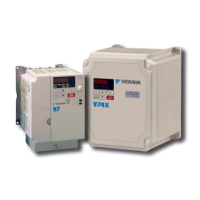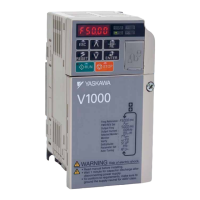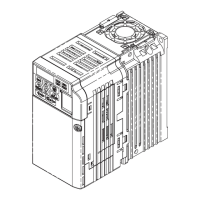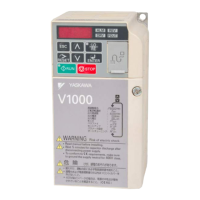No. Name Description Range Def.
Control
Mode
Addr.
Hex
Pg.
V/
f
O
L
V
P
M
d3-01 Jump Frequency 1
d3-01 to d3-04 allow programming of three prohibited
frequency reference points for eliminating problems with
resonant vibration of the motor / machine. This feature does
not eliminate the selected frequency values, but accelerates and
decelerates the motor through the prohibited bandwidth.
The parameters must be according to the rule
d3-01 ≥ d3-02 ≥ d3-03.
0.0 to
400.0
0.0
Hz
A A A 294 156
d3-02 Jump Frequency 2
0.0
Hz
A A A 295 156
d3-03 Jump Frequency 3
0.0
Hz
A A A 296 156
d3-04 Jump Frequency Width
This parameter sets the dead-band width around each selected
prohibited frequency reference point. The bandwidth becomes
the designated Jump frequency, plus or minus d3-04.
0.0 to
20.0
1.0
Hz
A A A 297 156
d4: Frequency Reference Hold
Use d4 parameters to configure the drive frequency reference hold function.
d4-01
Frequency Reference Hold
Function Selection
Determines if the frequency reference or frequency reference
bias is saved when the Run command is removed or the power
goes off.
0: Disabled
1: Enabled
This parameter is effective when the multi-function inputs
“Accel/Decel Ramp Hold”, “Up/Down” or “Up/Down 2”
commands are selected (H1-oo = A or 10/11 or 75/76).
0, 1 0 A A A 298 156
d4-03
<1>
Frequency Reference Bias
Step (Up/Down 2)
Sets the bias added to the frequency reference when the Up/
Down 2 digital inputs are set.
When set to 0.00 Hz, the bias value is increased or decreased
according to d4-04.
When greater than 0.0 Hz, the bias value d4-03 is added or
subtracted to/from the frequency reference. The acceleration
or deceleration rate is ultimately determined by d4-04.
0.00 to
99.99 Hz
0.00
Hz
A A A 2AA 159
d4-04
<1>
Frequency Reference Bias
Accel/Decel (Up/Down
2)
Selects how the bias or frequency reference is increased when
using the Up/Down 2 function.
0: Use selected accel/decel time.
1: Use Accel/Decel Time 4 (C1-07 and C1-08).
0, 1 0 A A A 2AB 159
d4-05
<1>
Frequency Reference Bias
Operation Mode Selection
(Up/Down 2)
0: Bias value is held if no input Up 2 or Down 2 is active.
1:
When the Up 2 reference and Down
2 reference are both on
or both off, the applied bias becomes 0.
Currently selected accel / decel. times are used. Enabled only
when d4-03 = 0.
0, 1 0 A A A 2AC 160
d4-06
Frequency Reference Bias
(Up/Down 2)
The Up/Down 2 bias value is saved in d4-06 when the
frequency reference is not input by the digital operator. The
function depends on the setting of d4-01.
It is limited by d4-08 and d4-09.
-99.9 to
+100.0
0.0% A A A 2AD 160
d4-07
<1>
Analog Frequency
Reference Fluctuation
Limit (Up/Down 2)
When an Up 2 or Down 2 input is active and the frequency
reference value from analog or pulse input changes for more
than the level set in d4-07, the bias value is hold and the
frequency reference is changed to the new value.
After the speed reaches the frequency reference the bias hold
is released.
0.1 to
+100.0
1.0% A A A 2AE 160
d4-08
<1>
Frequency Reference Bias
Upper Limit (Up/Down
2)
Sets the upper limit for the bias and the value that can be saved
in
d4-06. Set as a percentage of the maximum output frequency
E1-04.
0.1 to
100.0
<4>
A A A 2AF 160
d4-09
<1>
Frequency Reference Bias
Lower
Limit (Up/Down 2)
Sets the lower limit for the bias and the value that can be saved
in d4-06. Set as a percentage of the maximum output frequency
E1-04.
-99.9 to
0.0
0.0% A A A 2B0 161
d4-10
Up/Down Frequency
Reference Limit Selection
Selects which value is used as frequency reference lower limit
if the Up/Down function is used.
0: The lower limit is determined by d2-02 or analog input
(H3-02/10 = 0). The higher of both values becomes the
reference limit.
1: The lower limit is determined by d2-02.
0 or 1 0 A A A 2B6 161
d7: Offset Frequency
Use d7 parameters to set the offset frequency.
d7-01
<1>
Offset Frequency 1
Added to the frequency reference when the digital input
“Frequency Offset 1” (H1-oo = 44) is switched on.
-100.0 to
+100.0
0.0% A A A 2B2 161
d7-02
<1>
Offset Frequency 2
Added to the frequency reference when the digital input
“Frequency Offset 2” (H1-oo = 45) is switched on.
-100.0 to
+100.0
0.0% A A A 2B3 161
d7-03
<1>
Offset Frequency 3
Added to the frequency reference when the digital input
“Frequency Offset 3” (H1-oo = 46) is switched on.
-100.0 to
+100.0
0.0% A A A 2B4 161
<1> Parameter can be changed during Run.
<2> Default setting value is dependent on parameter o1-03, Digital Operator Display Selection.
B.2 Parameter Table
YASKAWA ELECTRIC SIEP C710606 16C YASKAWA AC Drive – V1000 Technical Manual
341
B
Parameter List
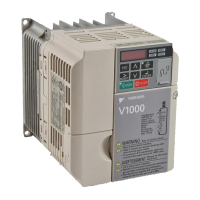
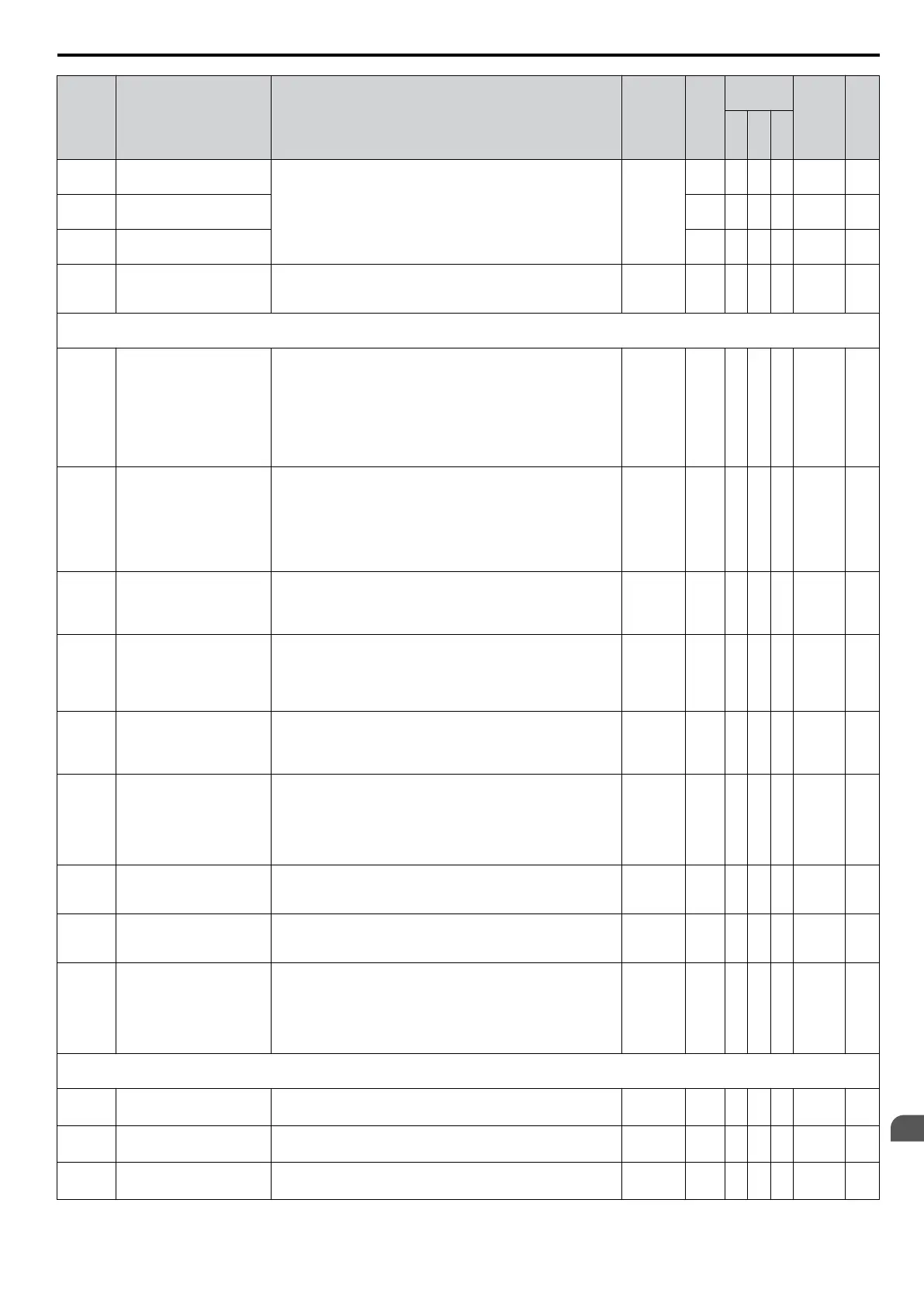